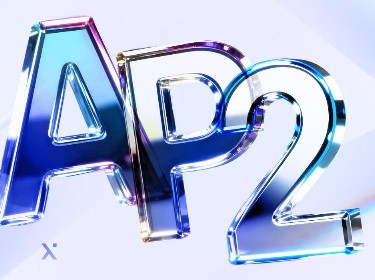The Hyperledger project gives corporations precisely what they need – full control over access to their private assets. It is made possible with its complete set of blockchain frameworks, libraries, and tools to craft solutions for enterprise business workflow management.
As blockchain technology tightens its grip on cross-industry applications, there’s hardly anyone who has not heard of platforms such as Bitcoin or Ethereum. Bitcoin is being universally adopted as a digital currency, while Ethereum-based applications and projects have found their way to many markets – from finance and commerce to entertainment. On an enterprise level, however, it is the Linux Foundation Hyperledger project that takes center stage.
There’s a common misperception that Hyperledger is a blockchain platform in itself. In fact, it is a global project that offers enterprises the infrastructure, tools, guidelines, standards, and frameworks to create open-source blockchains and decentralized apps for a variety of use cases. Its main contributors include IBM, Intel, SAP, J.P. Morgan, Microsoft, Amazon, and Google.
All projects created under the Hyperledger umbrella have a modular architecture that provides high scalability and interoperability. This means that Hyperledger projects are constantly evolving, and can be easily integrated with each other in order to complement features and functionality.
Unlike most other blockchain frameworks, Hyperledger projects don’t have built-in tokens or cryptocurrency. Enterprises can choose to create or integrate a particular coin if they need one. Among the most attractive features of Hyperledger for enterprises is its permissioned nature. The project’s vision is to create an ecosystem of private chains, each with its own set of rules tailored to a specific market.
Read on to find out about the top Hyperledger projects already up and running, and how businesses integrate enterprise blockchain development services to build solutions that optimize and streamline business processes.
Also, check out the short video below to quickly grasp all relevant information on the Hyperledger project. You’ll find there benefits and limitations of the Hyperledger project along with a brief description of Hyperledger frameworks and real-world solutions built on top of them.
Overview of major Hyperledger projects
Being a hub for open-source blockchain development, Hyperledger incubates various projects that include distributed ledgers, libraries, and tools. Their development is supported by a community of over 250 member organizations who are industry leaders in finance, supply chain management, manufacturing, and technology.
Here we’re going to take a closer look at the distributed ledger technologies that can be used by enterprises to build their own blockchain networks, all custom-fit for a particular business. Dominating the current market are Hyperledger Burrow, Hyperledger Fabric, Hyperledger Indy, Hyperledger Iroha, and Hyperledger Sawtooth. Let’s compare Hyperledger projects and examine each in turn.
Get a light introduction to Hyperledger architecture and its tools
Hyperledger Burrow as a portal to Ethereum
![]()
Hyperledger Burrow acts as a bridge between traditional Ethereum smart contracts, which are now widely used to create decentralized applications, and the benefits of permissioned architecture for corporate environments.
It allows the network to be broken down into subnets and to run multiple chains simultaneously. This way businesses are able to create complex systems with multiple roles and to customize access rights to their business’ assets, expert knowledge, and resources. The network could be split between subsidiaries, or even the company’s business partners – sharing open data while keeping each individual party’s proprietary information protected.
Burrow runs transactions and executes smart contracts on the Ethereum Virtual Machine (EVM). Developers are not the only ones who benefit from the convenience of crafting applications in a familiar EVM environment. Enterprises, too, gain a great advantage, as their blockchain systems become fully compatible with a variety of services offered by Ethereum decentralized apps.
Another strength is Burrow’s high transaction speed, enabled by a proof-of-stake (PoS) consensus engine. The PoS implementation eliminates the need for time-consuming mining and therefore reduces the high costs of immense computational power. It is based on a byzantine, fault-tolerant Tendermint protocol which relies on a group of trusted parties or ‘validators’ that vote to approve transactions and maintain the integrity of the network.
Ultimately, this Hyperledger project would be a good choice for companies looking for simplicity, high performance, and scalability. It’s suitable for a whole range of applications, from supply chain to digital document management systems.
Hyperledger Fabric and its extreme flexibility
Hyperledger Fabric boasts flexibility and a ‘plug-and-play’ approach. Perhaps this is why it’s very popular with enterprises and has been used for blockchain building by top brands such as IBM, Amazon, and Walmart. In 2021, Hyperledger Fabric was recognized as the most effective blockchain framework for businesses.
What makes the platform so flexible is its use of container technology to run all its components, including its own native smart contracts – which are called ‘chaincode’. Containers allow you to easily pick out the pieces and construct a custom blockchain, while chaincode enables the grouping of individual smart contracts or oversight of rules for specific business processes. Once you have created these groups or sets of rules, you can apply them to different roles or circumstances.
To implement various levels of privacy, Hyperledger Fabric supports the creation of channels. Organizations (‘peers’) registered on the network can enter channels and undertake private deals, the details of which don’t need to be made public if privacy is preferred. Discounts, sales, or special offers would be typical cases where private channels are necessary. Chaincodes can be assigned to channels to define business logic and permissions.
The platform does even more – it allows you to choose the consensus or even introduce your own consensus implementation to find the best fit for the relations between members of the chain. For its extreme flexibility, Hyperledger Fabric is a leading blockchain framework choice for any type of business.
See our case study of a document management solution built on Fabric
Hyperledger Indy for decentralized identity
![]()
Hyperledger Indy offers a package of pluggable components, libraries, and tools for creating digital identity solutions based on blockchain technology. Since the platform is built specifically for these types of projects, it can potentially save enterprises considerable amounts of money as well as accelerate deployment.
As a great solution for self-sovereign identity management, Indy can put users in the driver’s seat and give them full control over their personal data. The Hyperledger project has all the required tools to build a shield to safeguard identifiable information from malicious attacks and privacy breaches.
The platform provides separate storage for digital identity via a private blockchain subnet. Users on the public chain can therefore control the permissions and offer access to their credentials or other personal information if and when needed. This system allows the easy exchange of private data between organizations and individuals.
Hyperledger Indy provides the building blocks to forge decentralized identities that comply with regulations, standards, and requirements across all environments – from workflows to corporations to different jurisdictions. It enables the creation of an ecosystem that glues together players from various industries and allows them to safely exchange information without the risks of forgery and theft.
Hyperledger Iroha offering impressive out-of-the-box features
Although claimed to be a general-purpose blockchain, Hyperledger Iroha is especially great for building digital payment systems, inter-bank settlement solutions, and logistics platforms. Features such as currency handling and communication between the blockchain and mobile back-ends are already pre-programmed into the platform.
Iroha’s built-in commands for creating, burning and transferring digital currency, as well as managing multiple accounts, make rolling out banking payment solutions a breeze. They eliminate the need for implementing smart contracts for these applications: this speeds up development and reduces your expenses.
Iroha’s architecture is based on a modern codebase and has a clean and straightforward design that boosts the application’s performance, stability, and usability. It would work very well for solutions that require the handling of rapid simultaneous transactions involving small amounts of crypto.
The platform’s strong permissioned architecture allows the user to control access and lay down restrictions for all commands, queries, and actions performed on the network. Aided by its minimalistic design, which uses only the essential components and a modular approach, Hyperledger Iroha is proving to be an elegant tool for enterprise blockchain development.
Hyperledger Sawtooth surprises with performance
![]()
Hyperledger Sawtooth provides a blockchain architecture with the core network functionality separated from the actual application logic. The API between these layers makes it easy to define and roll out new features without having to be familiar with blockchain design specifics.
The platform, like most Hyperledger projects, boasts a modular approach with several consensus algorithms available for plug-and-play. Sawtooth’s featured consensus model is its own unique Proof of Elapsed Time (PoET) algorithm, which is much more efficient compared to traditional approaches. PoET chooses the network node that finalizes block creation via a random number generator running in protected memory space allocated by Intel’s SGX CPU architecture.
The PoET consensus speeds up network processes, but what really makes Hyperledger Sawtooth shine is an advanced scheduler that separates transactions into parallel flows. This increases the performance considerably while still ensuring there is no double spending on transactions.
Another neat feature of the platform is its integration with Hyperledger Burrow. Basically, this creates the window to the Ethereum Virtual Machine and connects Sawtooth with a large ecosystem of decentralized apps. The platform allows the creation of private chains and is a great fit for enterprises who need to protect proprietary data from unauthorized parties.
Examples of solutions built on Hyperledger projects
Enterprises that are looking to optimize their workflows and increase business efficiency are starting to look at blockchain as a viable solution. Hyperledger projects provide the infrastructure and tools, offering a shortcut to setting up blockchain applications perfectly tailored for the case.
We’ll now look at some of the prominent blockchain systems taking advantage of Hyperledger.
Digital contract management with Hyperledger Burrow
Hyperledger Burrow is well suited to sharing business processes between companies within an open environment. The Agreements Network provides a great example here: it uses Burrow to build an ecosystem for sharing legal documents and contracts not only between the organization’s personnel, but also outside the company boundaries and, ultimately, between any type of business connected to the network.
The contract management platform uses Hyperledger Burrow’s permissioned nature to create a robust governance system providing shared access to agreements only to the parties involved. The Agreements Network employs smart contracts to bring up live updates on fulfillment of the obligations by the contract signees. Lawyers get an opportunity to market their services by offering them as digital products, while businesses are able to visualize processes and mitigate risks.
Pharmaceutical supply chain management with Hyperledger Fabric
![]()
BRUINchain is a blockchain solution, based on Hyperledger Fabric, that allows drug tracing, verification, and detection of counterfeit medication. This Hyperledger blockchain project puts all the players of the pharmaceutical supply chain in one private network with shared permissions and conforms with the Drug Supply Chain Security Act (DSCSA) which protects consumers from purchasing harmful products.
Along its journey within the supply chain, each drug passes a series of inspections, with each transaction logged into the blockchain. All participants, from the shippers to the receiving bay to the pharmacy personnel, use BRUINchain’s mobile application to scan a unique 2D barcode. A barcode scan retrieves data such as manufacturer and expiration date and confirms that the drug has been inspected for authenticity by a qualified pharmaceuticals expert. The app allows users to track the drug from stocks to the pharmacy.
The platform includes an automated verification system that connects Hyperledger Fabric blockchain app users with other manufacturers without them having to register on the BRUINchain network. A special privacy protection framework, integrated into the solution, enables the sharing of securely encrypted documents, messages, and data.
Once the system is running successfully, doctors and pharmacists prefer looking up inventory using their mobile phone to checking the refrigerator: this is because the Hyperledger-powered app will tell them whether the medication was verified, as well as its expiration date and all its specifications.
Check out this article to find more about what Hyperledger smart contracts can do for your business
Identity authentication for credit unions with Hyperledger Indy
Credit unions often apply different authentication methods for their members depending on whether the process takes place via a call center, in the lobby, or in an online environment. This opens the door for identity theft and fraud. MemberPass sovereign identity solution, based on Hyperledger Indy, allows credit unions to streamline their identity authentication processes, creating one unified means for identifying members and credit union personnel.
The platform provides a digital identity wallet app with two-way encrypted communication features. As a result, credit union members and employees alike can be sure they won’t be disclosing information to an unwanted party. The Digital Trust Registry used in MemberPass holds the credit union’s unique decentralized ID (DID) within the network, which acts much like a public domain on the internet.
Several credit unions have already expressed interest in including MemberPass as part of their onboarding strategies and integrating the solution with their internet banking and mobile banking channels. Among the platform’s advantages are improved cybersecurity, seamless user experience, and the potential for lowering the credit unions’ administrative and operational costs.
Central bank digital currency payments with Hyperledger Iroha
![]()
The National Bank of Cambodia partnered with a blockchain developer to revitalize its retail payments and promote the use of local currency instead of US dollars. The solution they came up with is the Bakong mobile payments and banking platform, available on iOS and Android.
Bakong is based on Hyperledger Iroha and uses a digital currency backed by the native Khmer riel (KHR). It allows citizens to transfer funds and make purchases – all using a convenient and slick mobile app. The project benefits both retailers, who now have a secure digital payments app, and also the banks, making inter-bank transfers less costly. It uses the ISO 20022 standard for messaging so that any bank’s internal system can interact with the app.
Any citizen can open up an account in Bakong, even if they don’t have a regular bank account. Registration is simple and involves taking a photo of your ID and a selfie which is then approved by an AI system. After associating themselves with a designated local bank, the user gets access to mobile payments and P2P money transfers. The app supports the generation of QR codes for seamless transactions without disclosing personal information. An additional handy feature allows users to view all the registered retailers displayed on a map.
The National Bank needed a permissioned system because it wanted to approve all the registered users. Hyperledger Iroha was chosen because it was the network best suited for digital payment solutions, as well as having built-in features to support mobile applications.
Blockchain application management with Hyperledger Sawtooth
Sextant is an enterprise blockchain application management platform that streamlines development and provides orchestration tools for blockchain apps. It uses Kubernetes as an operational layer for containerized blockchain management.
The solution uses Hyperledger Sawtooth as a foundation for one-click deployment of on-premises, cloud, or hybrid implementations of enterprise blockchain networks on Kubernetes. Sawtooth was chosen for its modular architecture and design that allows users to start with just the essential functionality and incorporate additional services when the need arises.
At the time of writing, Sextant was available on the AWS cloud platform with plans to support Google Cloud, Microsoft Azure, and Alibaba Cloud in the near future.
Transforming enterprises with Hyperledger projects
Hyperledger blockchain platforms offer groundbreaking solutions for enterprises struggling with the challenges of managing highly distributed systems, or with lack of trust and transparency in operational processes, or with high expenses associated with dealing with third-party service providers. Leading Hyperledger projects like Fabric, Burrow, Indy, Iroha, and Sawtooth come with a variety of tools for straightening out such complex workflows as supply chain management, digital payments, sovereign identity, regulatory compliance, and so on.
The modular architecture and plug-and-play approaches integral to Hyperledger bring advantages such as flexibility, scalability, and interoperability for your enterprise systems. This means they can easily grow into mature ecosystems. Setting up and developing these solutions, however, require the expertise of an experienced Hyperledger development team like PixelPlex. We look forward to partnering with you on your next project and transforming your enterprise with next-generation blockchain technology.




